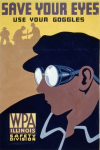

These are snapshots taken by my wife (Rollande Krandall) and myself of older once-working "live steam" engine models in the Henry Ford Museum, Dearborn, Michigan.
Clicking on any of the images below will produce a larger version of it.
The older engine models, especially those from the 19th century, are especially interesting as illustrations of the early (and poorly documented) history of the hobby of model engineering.
I particularly like this beam engine because of the way it sits on one large column. This gives a very open design in which everything is visible.
This model of a horizontal engine dates from 1880 (or 1860; the placard is hard to read in another photo we took; I need to doublecheck this).
The "table engine" style of steam engine was popularized by Henry Maudslay (a famous Maudslay table engine appears in the Science Museum in London). This model of a table engine from 1880 was made by an unknown maker in Bedford, England.
This model of a horizontal engine dates from about 1880. The placard indicates that the maker is unknown, and that it is probably from the United States.
This is a model of a "McNaught" principle compound beam engine; maker unknown, probably from England. The final image shows some of its detail fairly clearly, but the guy in the background is not to be trusted.
This is a nice example from about 1900 of a complete "steam plant" which integrates into a single model a steam engine and its boiler. More elaborate models of this type might have, additionally, some means of providing make-up feedwater to the boiler (such as a hand pump, a mechanically driven pump, or injectors).
There are many styles in model engineering (probably more styles than there are model engineers). Some engines aspire to recreate the visual effect of their "prototype" in every detail of surface finish. Others are intended to be beautiful works in their own right, with an aesthetic derived from the scale and finish of the model rather than that of the prototype. This model falls into this latter category. It is made largely of highly polished brass.
This engine bears a plate which indicates that it was built by Ervin T. Middleton of Flora, Indiana in 1931. The museum placard about this engine is curious, as it says that this is a "Four Column Beam Engine." I count six columns.
We forgot to record the information about this engine. It has a quasi-commercial look to it, though, as some of the parts of the base appear to be stampings. (I could be quite wrong about this, though.)
Copyright © 2001, 2004
by David M. MacMillan and Rollande Krandall.
This work is licensed under a
Creative Commons License,
which includes important disclaimers of warranty and liability.
lemur.com is a service mark of
David M. MacMillan
and Rollande Krandall.
The lemur image used below on this page is, however, in the
Public Domain
and is not claimed as a trade or service mark.
Other trademark
recognition.
Presented originally by lemur.com.SM
 A Gallery of Antiquarian Technology
[about this image]
A Gallery of Antiquarian Technology
[about this image]
 lemur.comSM
[about this image]
lemur.comSM
[about this image]